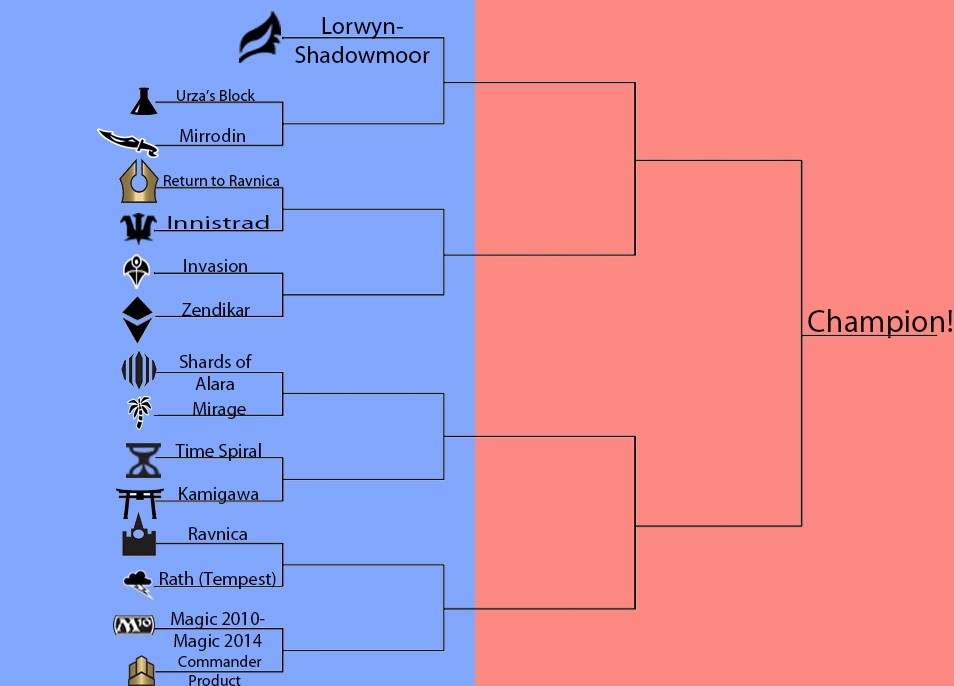The Battle of the Blocks continues with today’s matchup, pitting the artifact-based block of Mirrodin up against the enchantment-based Urza’s Block! Both of these blocks share a key negative effect, both of these blocks really hammered tournament attendance and the general outlook on the future of Magic: the Gathering at the time. Urza’s Block was billed as ‘the enchantment block’ by Wizards of the Coast, showcasing new design space for the much-maligned card type. Cards like Opal Caryatid and Hidden Herd embodied the idea of traps that would spring to life once the opponent activated the trigger of the unseen enchantment. Yet the set that decided to print Pestilence at common got in trouble not for its ingenious enchantment designs but for its artifacts, its lands and for reprinting Dark Ritual alongside a whole spate of other fast-mana combo cards. Urza’s Block was so fast and combo-heavy that a common saying thrown around during its Standard season was “the early game is the die roll, the midgame is mulligans, and the late game is turn one.” The impact of Urza’s Block was so profound that tournament attendance severely decreased, and the block following it, Masques Block, had a forcibly-neutered power level in order to be a safer block after the overpowered Urza Block. As it turns out, a turn-one Phyrexian Negator or a couple cheap accelerants into Turnabout with Tolarian Academy led to quick games that were heavily die-roll dependent and patently unfun to play.
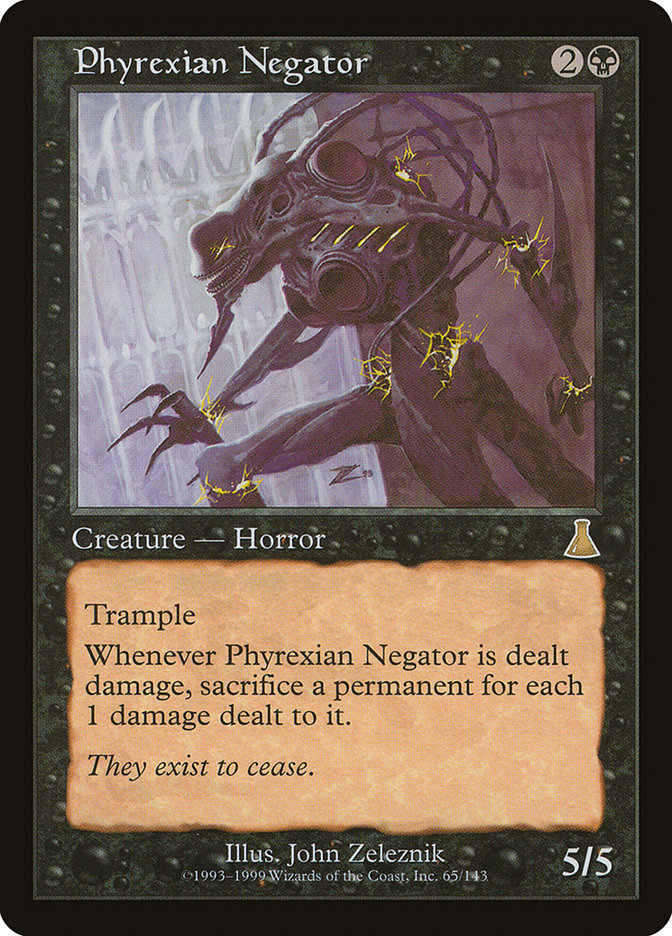
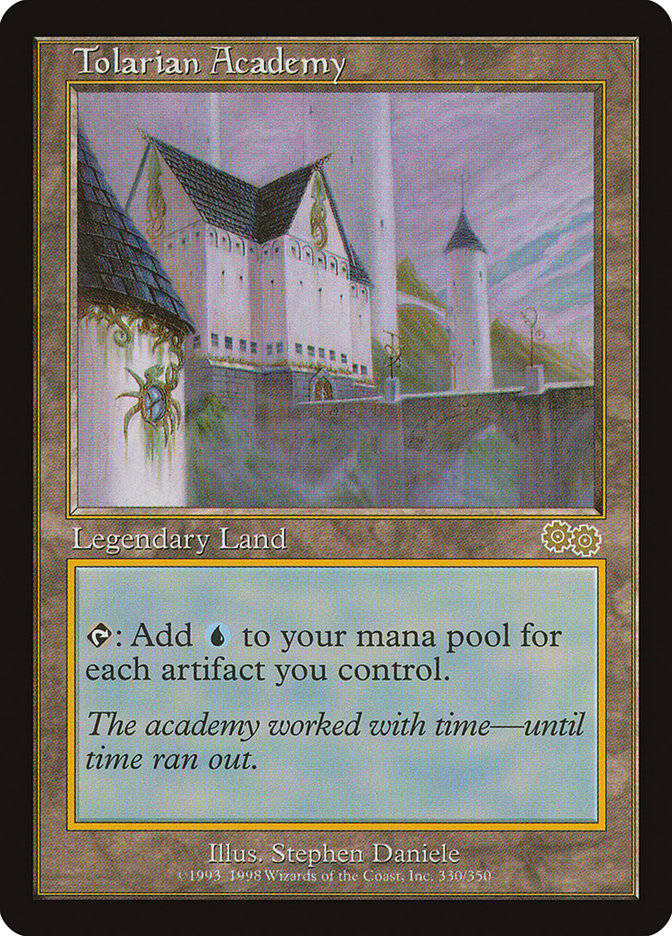
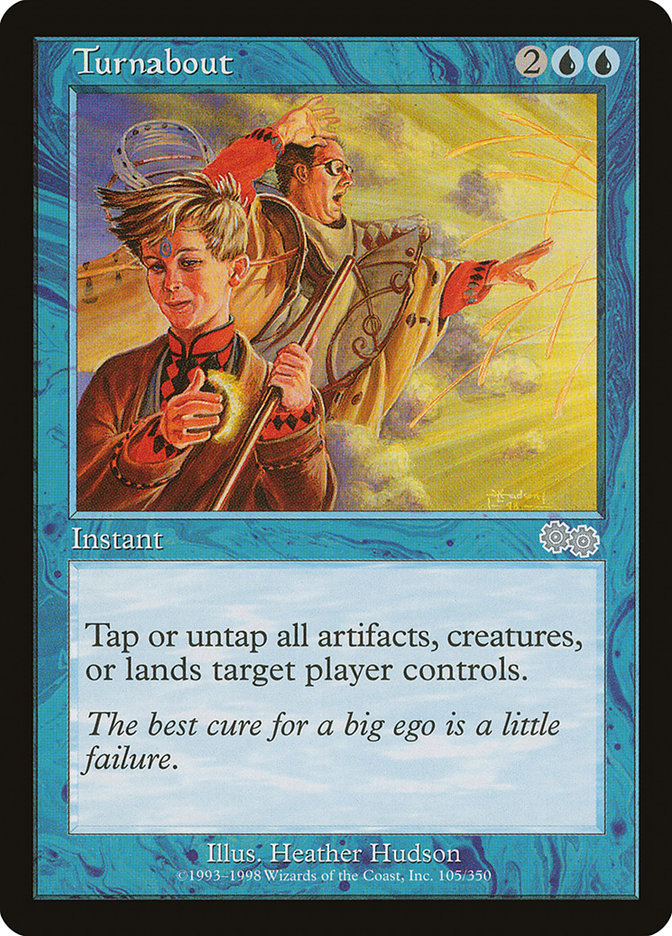
Magic didn’t die from the quick format of Urza’s Block. Instead, it picked up steam after the monumental amount of bannings, and saw continued success until it hit its next snag – Mirrodin Block. This block introduced players to the plane of Mirrodin, a world created by Karn, Silver Golem that was engulfed completely in metal. It also brought along a new type of card by introducing Equipment! Equipment was the answer to the wonky card designs like Sword of the Chosen that never embodied the awesome artifacts their art depicted. This new card type would come to prominence in an innocuous common – Cranial Plating – and broken Uncommon – Skullclamp. Affinity and friends dominated the Standard season of Mirrodin Block and, just like in Urza’s Block, drove away Magic players due to the disappointing metagame. Time and time again Wizards of the Coast had to wield the banhammer to suck momentum away from Affinity, but the damage was done as GP attendance dropped and people cried about the death of Magic as the player base dwindled.

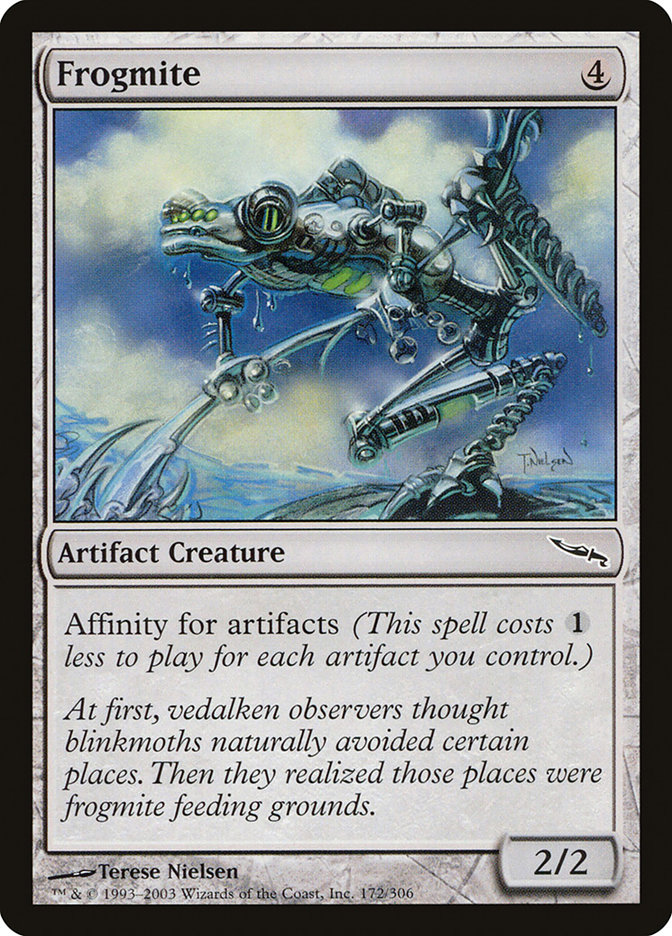
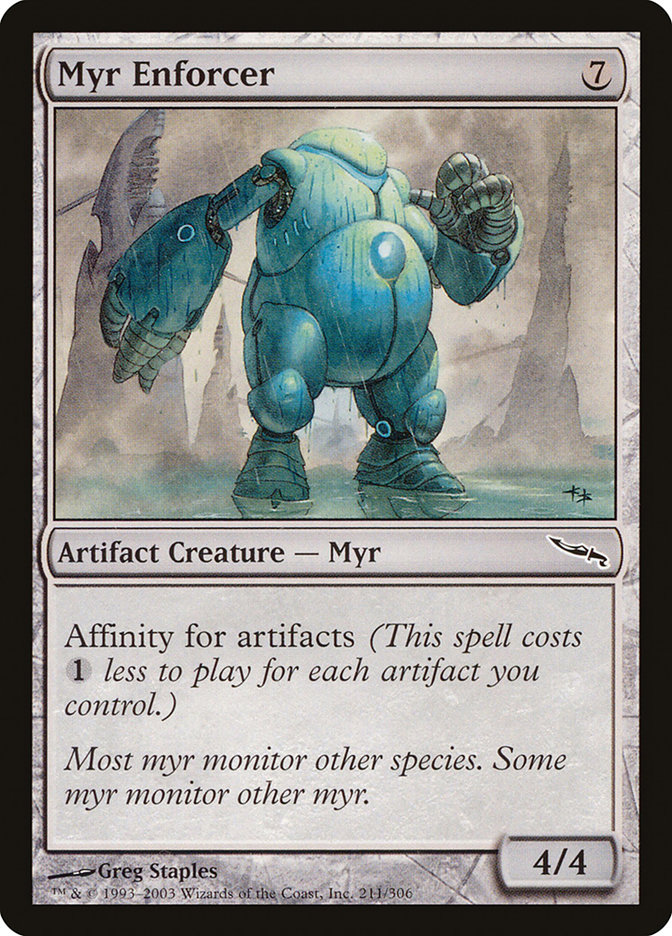
Thankfully, Magic has not died as a result of either of these blocks or perhaps even despite them, and it is presently experiencing its strongest growth in years. After the controversial Mirrodin Block and flavor-filled Kamigawa Block, Richard Garfield swooped in and brought the popular Ravnica block to the table, finally returning Magic to its pre-Mirrodin numbers in attendances and lightening the collective mood in the Magic community. Even if both blocks had a negative effect on the Magic community at the time, this battle pits Mirrodin against Urza’s Block in a battle for Commander superiority, not for which did a better job at almost killing Magic. Before we launch into this fight let’s examine the bracket one more time to see where the Battle of the Blocks stands!
Lorwyn-Shadowmoor Block is the first to make it into the Elite Eight after beating the commanderless Alpha-Revised Block in a very tight matchup. Today either Mirrodin Block or Urza’s Block advances to the Elite Eight and climbs further up the rankings to grab the title of Best Block for Commander. Remember, these battles are to decide which block contributed the most to Commander, not the best block in all of Magic. They will be compared in the usual five categories: Staples, Commanders, Strategies, Flavor, and The Bad.
Staples
Five Notable Staples from Mirrodin Block
1) Solemn Simulacrum
2) Eternal Witness
3) Lightning Greaves
4) Duplicant
5) Gilded Lotus
Mirrodin Block added important utility artifacts to the format through the inaugural printing of equipment and by stretching the design space of artifacts in these sets. Jens Thorén won the Invitational in 2002 and had his likeness printed on one of the most-played cards in Commander, Solemn Simulacrum. Solemn Simulacrum is the blender 300 from QVC for the Commander format – it finds lands, it draws cards, it’s an artifact, and it even comes back off of a Reveillark! Speaking of cards that return from a Reveillark, Eternal Witness brings redundancy to a format that is built to exist without it. Great off of a Tooth and Nail and an important part in toolbox decks that utilize Birthing Pod, Survival of the Fittest or Hibernation’s End, Eternal Witness is the card that brings any hand together.
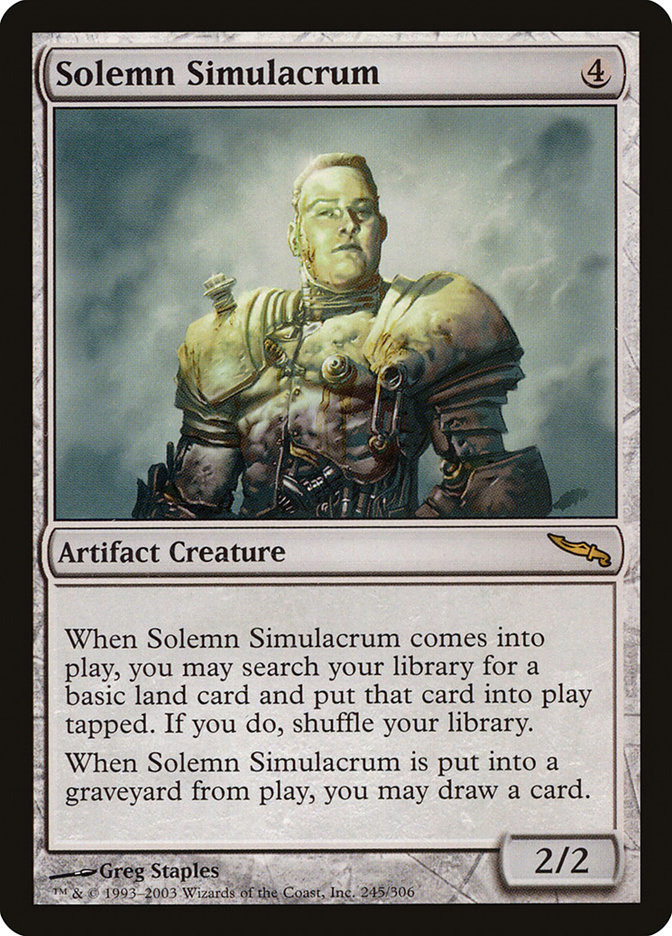
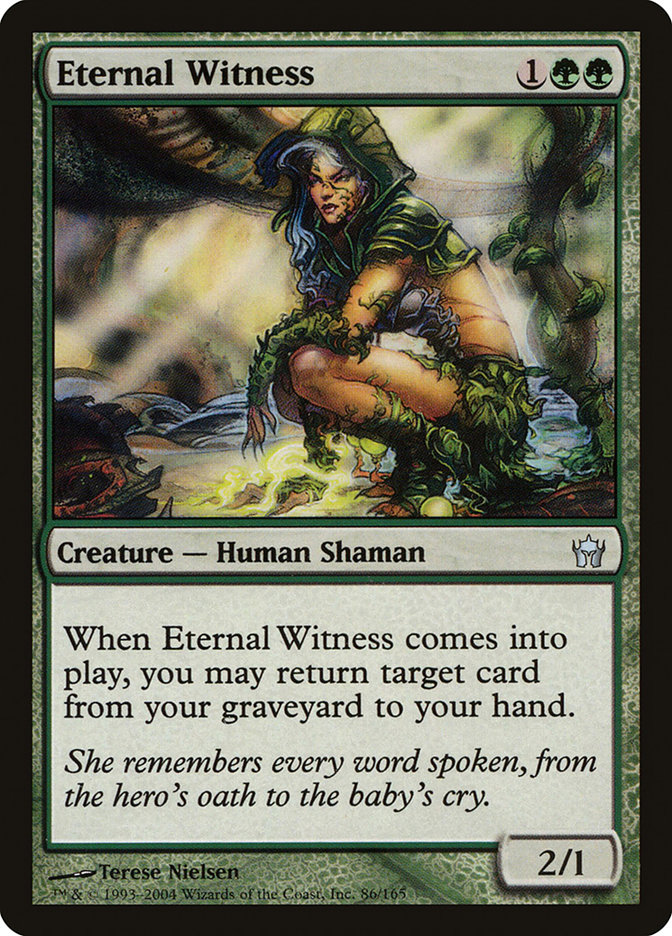
Lightning Greaves brings both safety and aggression to a board state by acting as a Mark of Fury while keeping important creatures shielded from the wicked ways of Swords to Plowshares and Condemn. Duplicant’s strength is shown in its board-altering ability and the power it brings to bear against the heavy graveyard-based format of Commander. With Commanders like Karador, Ghost Chieftain and The Mimeoplasm, the importance of exiling creatures is thrust to the forefront, and Duplicant fits in every deck as a silver bullet against the grindy recursive decks that take up such a large part of the current metagame. I chose Gilded Lotus as the last slot over Darksteel Ingot because of its uniqueness among other artifact ramp cards. Gilded Lotus ramps from five to eight and helps cast even the most devoted spells in a five-color deck with its recurring allotment of a Lotus’s worth of mana.
Five Notable Staples from Urzas Block
1) Yavimaya Elder
2) Academy Rector
3) Thran Dynamo
4) Greater Good
5) Karmic Guide
Two of my favorite old creatures come from this block, Academy Rector and Yavimaya Elder. One of the strongest four-drops to come down in the early game, Academy Rector deters attacks by standing in for the strongest enchantment in your deck, something no opponent wants to give you for free just by attacking. Yavimaya Elder is an efficient green three-drop that fills up the lower curve of Commander decks and, unlike most land-searching cards, is still a respectable draw in the late game. Greater Good is a manaless sacrifice outlet that draws and discards cards while triggering abilities like Persist and Undying. Not only is a manaless sacrifice outlet hard to find in green but Greater Good also assists in dumping specific cards into the graveyard, planting Brawn or Genesis somewhere useful all while filtering through the Commander deck at breakneck speed.
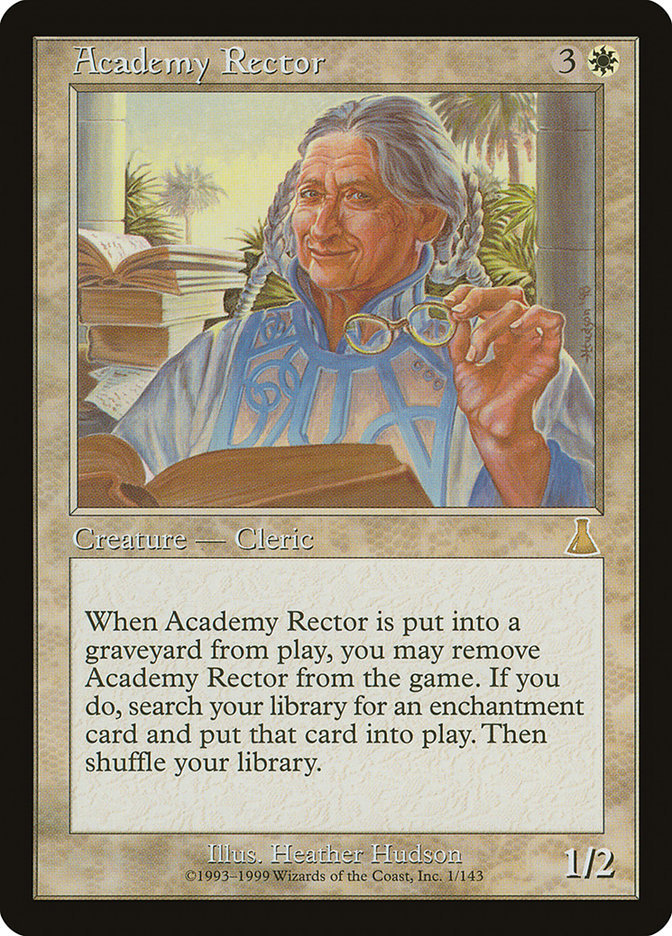
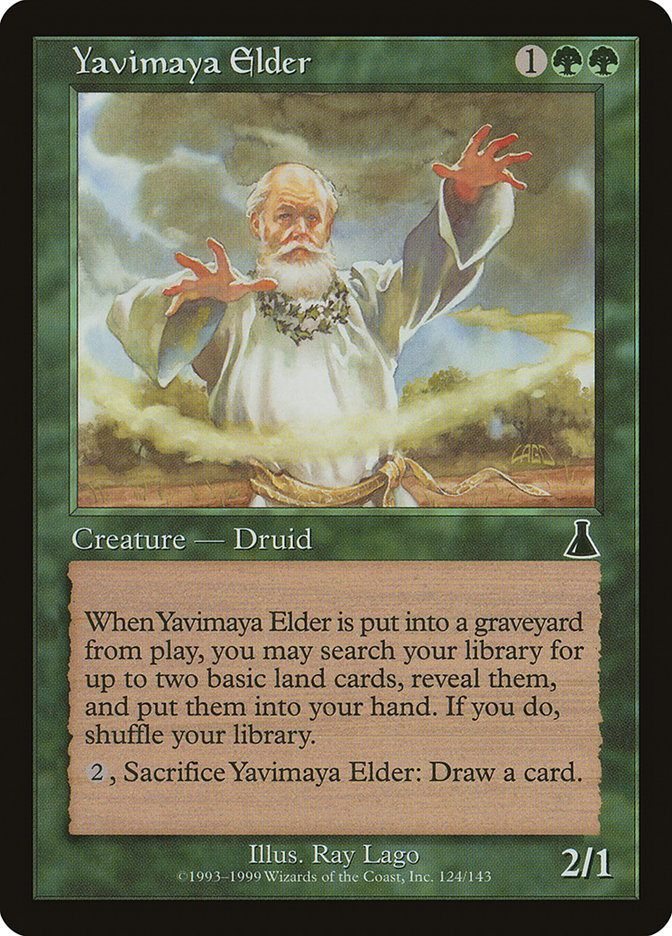
Academy Rector and friends are strong staples in Commander, but they are not as widely played as the ubiquitous Solemn Simulacrum and Eternal Witness. Mirrodin wins this round.
Commanders
The legendary creatures are the lifeblood of the Commander format, so this section weighs a little more towards the success of a block. When Mirrodin Block first came out, two of its legendary creatures – Bosh, Iron Golem and Memnarch – couldn’t be played as Commanders due to the restrictions at the time of the color identity rules. In the current metagame, both commanders see play and provide unique avenues into the format. Bosh, Iron Golem is an imposing red commander who throws artifacts like Mycosynth Wellspring to both finish off opponents and gain an advantage, while Memnarch is a controlling blue commander that can either be wizards tribal or an artifact-based control deck… or just like stealing everyone’s stuff.
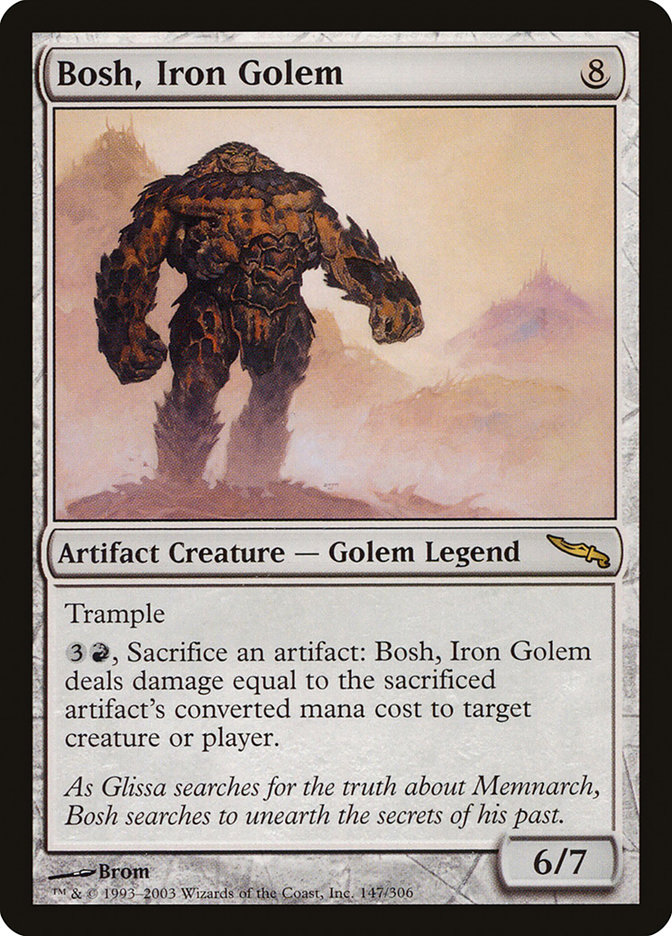
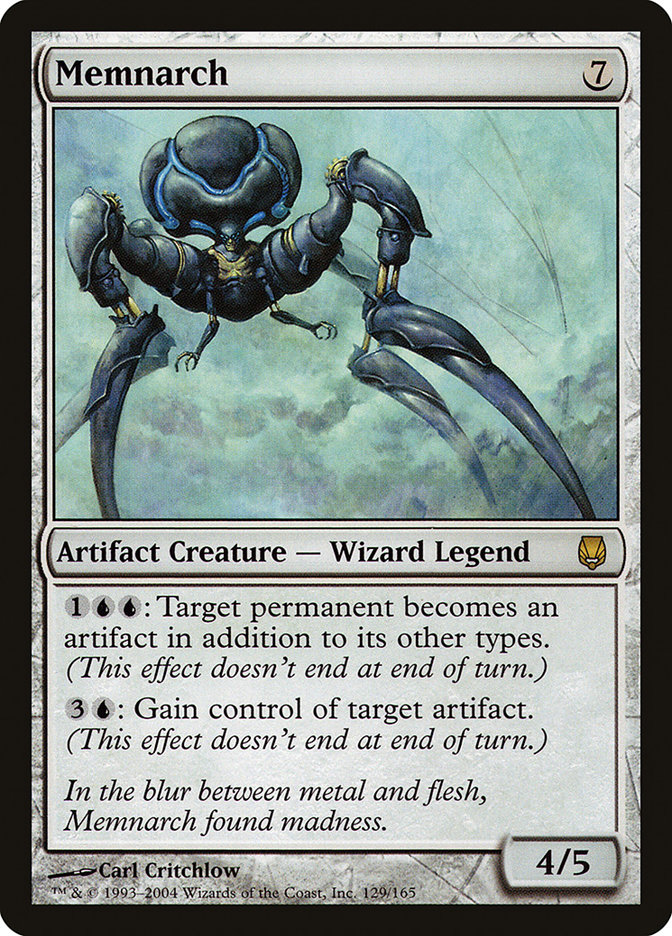
Karn, Silver Golem is the shining star from Urza’s Block when it comes to legendary creatures. He is the first colorless commander, and spawned an entire deck archetype with his printing that focused on taking advantage of a heavy artifact theme. Multani, Maro-Sorcerer is actually a very fun Commander that sees a small amount of play. Multani deck design focuses on Howling Mine effects to create the biggest creature on the board and stomp your opponents into dust. Finally the happiest elf, Rofellos, Llanowar Emissary, was a heavily-played Commander since his printing due to the consistent ability to have six mana on turn three. This dependable spike in mana production proved too strong for Commander, and he was unceremoniously banned from taking the helm ever again in the format.
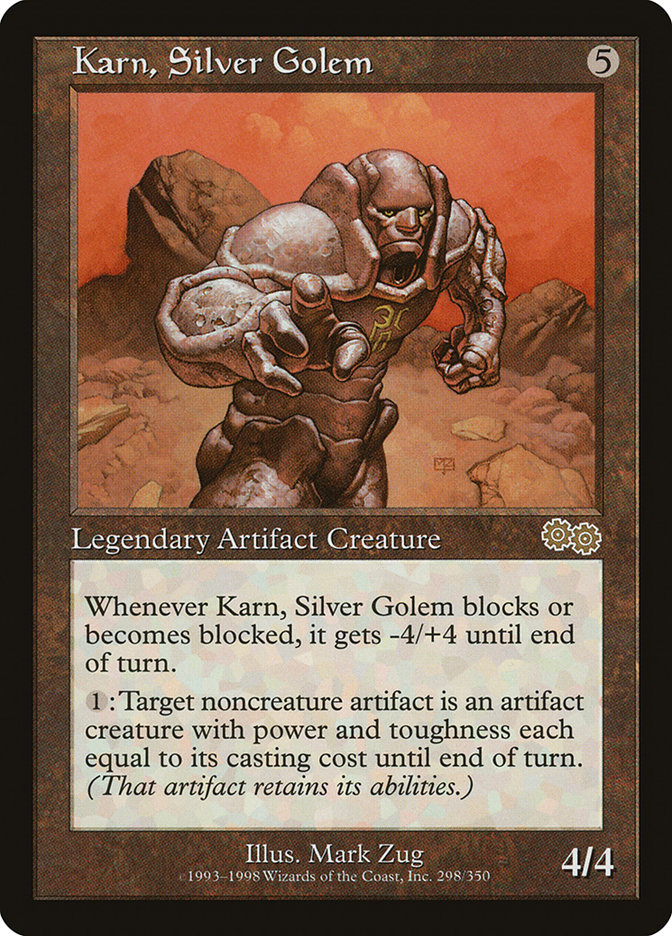
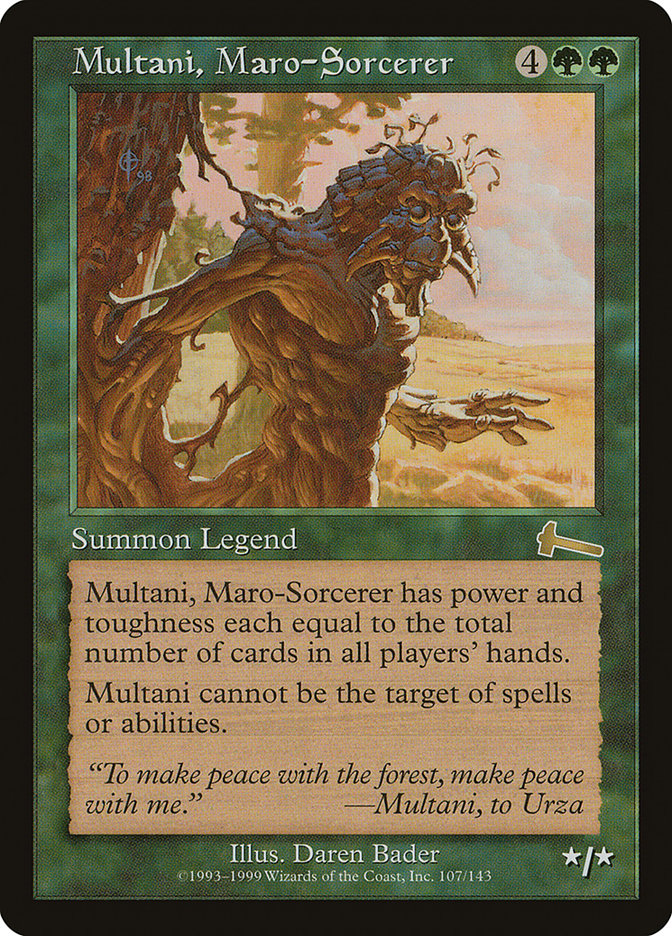
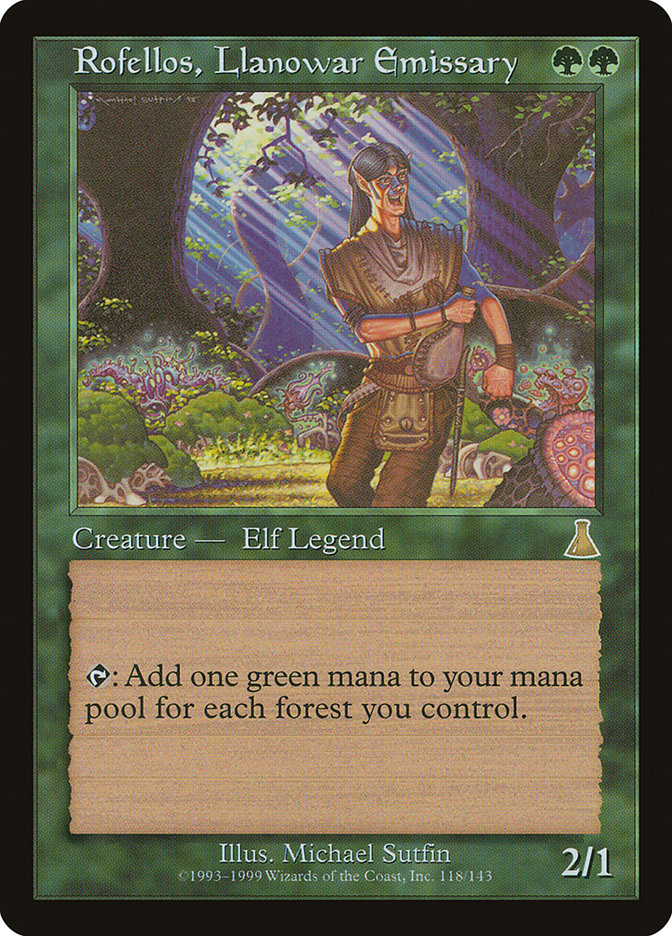
Urza’s Block provided more avenues for deck construction when it comes to the Commanders it brought to the format, and thus it wins this round.
Strategies
The purpose of this section is to highlight some of the cards from each block that helps support either established or rogue deck building strategies in Commander. A slew of cards from Urza’s Block – Attrition, Bloodshot Cyclops, Phyrexian Tower and Phyrexian Plaguelord – are important for decks that want to sacrifice creatures consistently. Urza’s Block also provided some great reanimation spells in Victimize, Diabolic Servitude, Exhume, Apprentice Necromancer and the protection-from-black Echo-Angel, Karmic Guide. Another established archetype, enchantment decks, found some great cards form the enchantment block in Replenish, Academy Rector, Crystal Chimes, Argothian Enchantress… and my favorite enchantment-based finisher, Opalescence. To quickly highlight some rogue strategies that were bolstered by Urza’s Block, the Painful Wheel deck received Iron Maiden, Teysa, Orzhov Scion picked up Darkest Hour, the adorable squirrel decks found Deranged Hermit and aggressive red decks like Gisela, Blade of Goldnight got their hands on Repercussion.
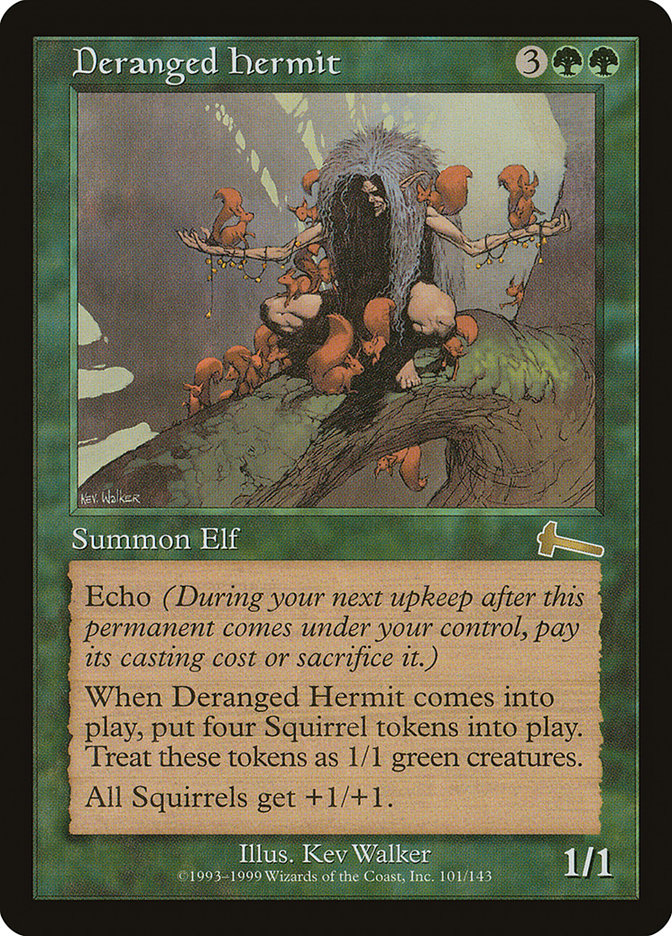
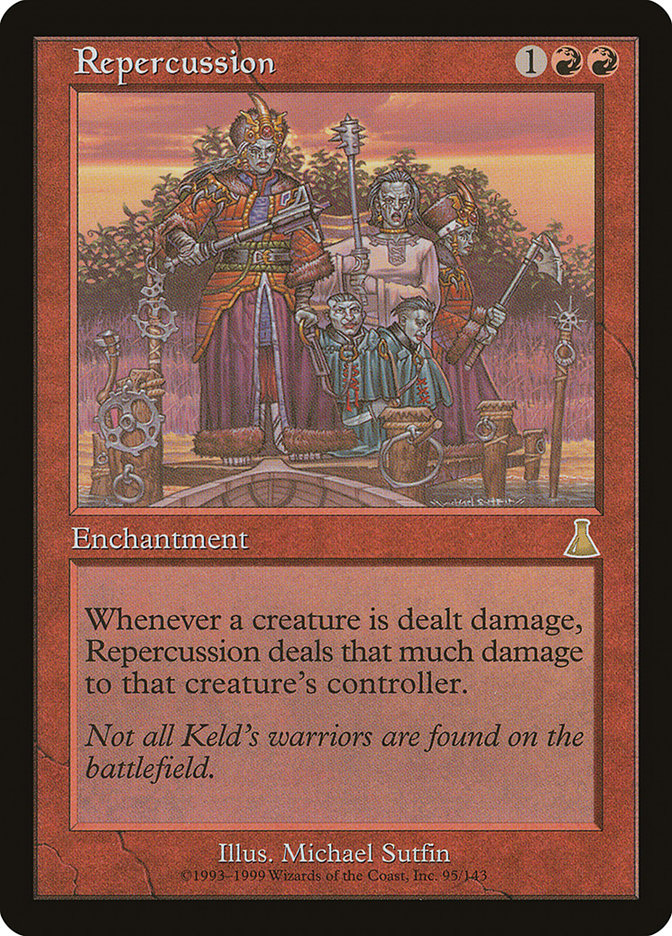
Mirrodin Block brought equipment to the format so the myriad of decks that utilize equipment, whether it be Rafiq of the Many using a Sword of Fire and Ice or Skullbriar, the Walking Grave attacking in with a Loxodon Warhammer, they owe a Debt of Loyalty to Mirrodin. The decks that like to focus on lifegain can thank it for Sun Droplet, Beacon of Immortality and Well of Lost Dreams. Well of Lost Dreams is the strongest of the three, enabling lifegain decks to turn their additional life into an incredible amount of card advantage. Mirrodin is supportive to artifact decks with cards like Fabricate to search out specific trinkets and the powerful Forge[/author]“]Darksteel [author name="Forge"]Forge[/author], Mycosynth Lattice, Mycosynth Golem, and the blue enchantment March of the Machines turns those artifacts into a way to finish the game. Mill decks also find a solid win condition in Mirrodin with the powerful Mesmeric Orb, while the three-drop artifact Crucible of Worlds has been instrumental in any land-based or dredge strategy.
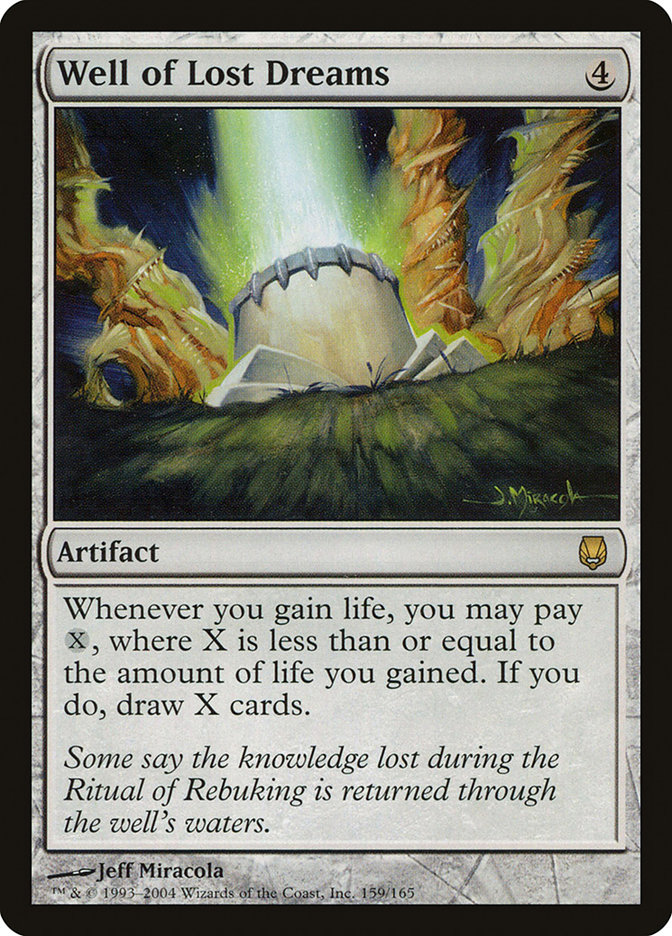
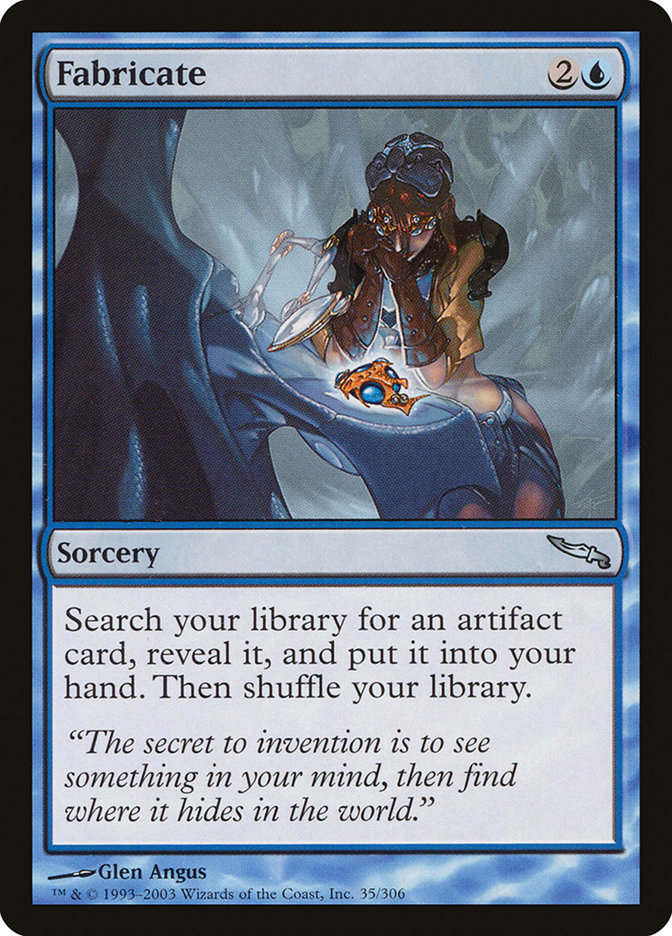
Both Mirrodin and Urza’s Block helped established archetypes evolve, but Urza’s Block gave us the instrumental printing of engine like cards in Attrition or Karmic Guide, and to me that vaults it ahead of Mirrodin Block to win this round.
Flavor
Unlike the other blocks in the Weatherlight Saga, Urza’s Block manages to establish itself as a specific realm apart from Gerrard, Sisay and the crew. With a strong black theme permeating the block, some flavorful spells like Contamination showcased the slow befoulment of the plane as the Phyrexians came to prominence in the storyline. One of the greatest parts of the Urza’s Block was that a large part of it took place in the Tolarian Academy, and some of the spells show this off with cards like Curfew and Stern Proctor. Although these scholastic-inspired arts and flavor texts were enchanting at the time, they’ve led to ill-fitting cards in Commander when placed besides cards like Squirrel Wrangler or Genesis Wave.
The plane of Mirrodin is a vast expanse of metal where organic life must fight for survival against the unforgiving wilderness of wiregrass fields and the heat of multiple suns. The flavor of Mirrodin rests in its artifacts and interesting creatures. A card like Vulshok Battlemaster tells the story of a man who has spent his entire life battling the metallic wilderness and has attuned himself to the powerful nature of equipment. The Arcbound creatures used Modular to demonstrate the lego-like quality of these machines that could be sacrificed and build into a huge trampling behemoth. The only issue here is that the complete adoption of the equipment subtype into Magic since Mirrodin Block has relieved some of the significance of the original equipment cards from Mirrodin, leaving us instead with bad memories of Cranial Plating and Skullclamp gone awry. When Mirrodin first came out it was defined by its equipment, but with the prevalence of the card type in the modern era the uniqueness and flavor of Mirrodin was scrubbed away from the original equipment and aren’t a Mirrodin-only idea.
When it comes to flavor, Urza’s Block seems out-of-place with cards like Curfew even though it has some flavor hits like Disease Carriers. Mirrodin Block takes this category by bringing players to the metallic wasteland of Karn’s creation.
The Bad
When it comes to Commander, Ravager Affinity never became the boogeyman that it was in Standard. Mirrodin Block instead unleashed the Time Walk-carrying Panoptic Mirror and infuriating Sundering Titan onto an unsuspecting Commander populace. Panoptic Mirror was an easy ban due to its interaction with an eternal format. At its time in Standard the worst that could go under Panoptic Mirror was a Tooth and Nail, but once combined with the Commander card-pool it opened up an unreal amount of combos with this card, none of which were fun, and it received an immediate ban. Sundering Titan found its way onto this list because of its interaction with flicker effects and reanimation spells effectively shutting down an entire multiplayer game. Staff of Domination was recently pulled off the Commander ban list, but in its heyday nothing was worse than seeing that card across the table. The amount of options and the control it unleashed on the board, plus the ease with which it could lead to infinite-mana combos, was unsurpassed for the longest time and has only recently been deemed ‘safe enough’ and allowed back into the format.
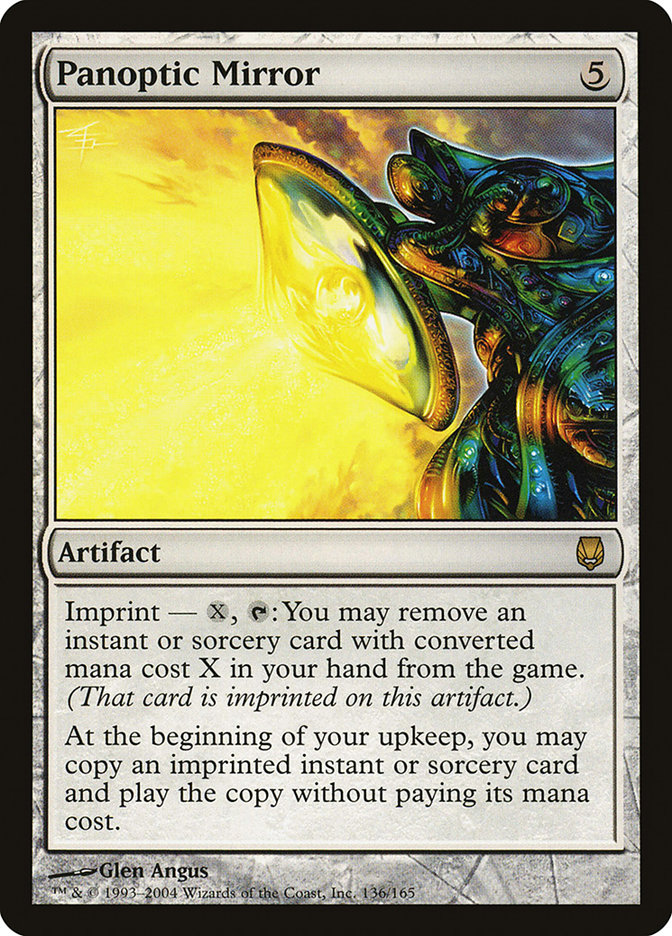
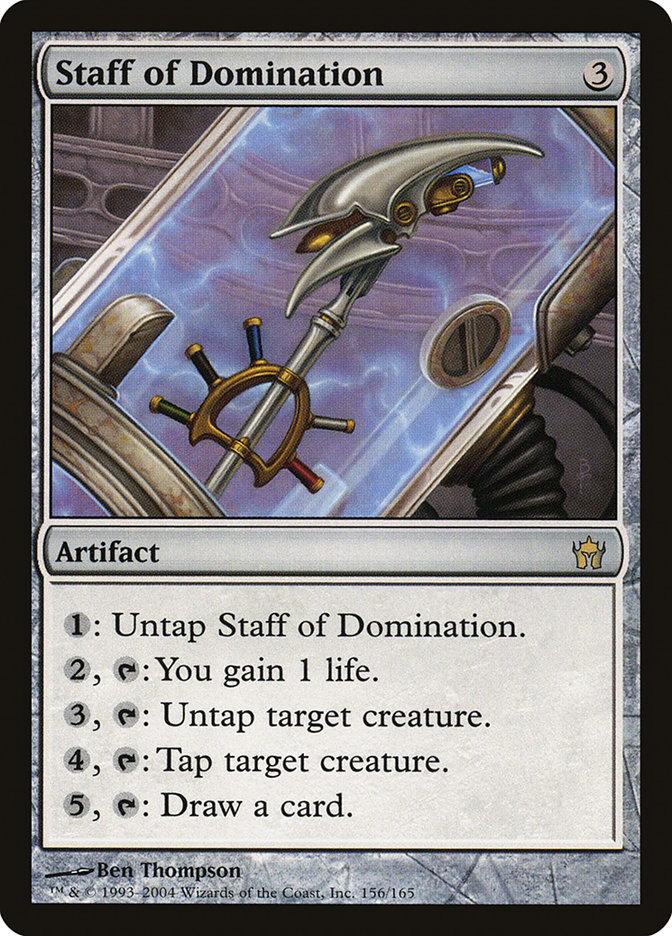
Urza’s Block has the most bannings of any non-Alpha block on the Commander banned list. With a stunning four bans in the other ninety-nine and a banned Commander, something just went wrong in this set. Rofellos, Llanowar Emissary, Metalworker and Tolarian Academy provide way too much mana too quickly and allow players to gain an unfair advantage. The reason these cards are banned isn’t just the early game spike – if that was the reason, we’d see cards like Sol Ring and Mana Crypt on the chopping block – but because of their capacity to be easily abused for so much mana so quickly that forces their banning. The most you can do with Sol Ring is generate an additional two mana, none of these three offenders stops at so humble a number as that.
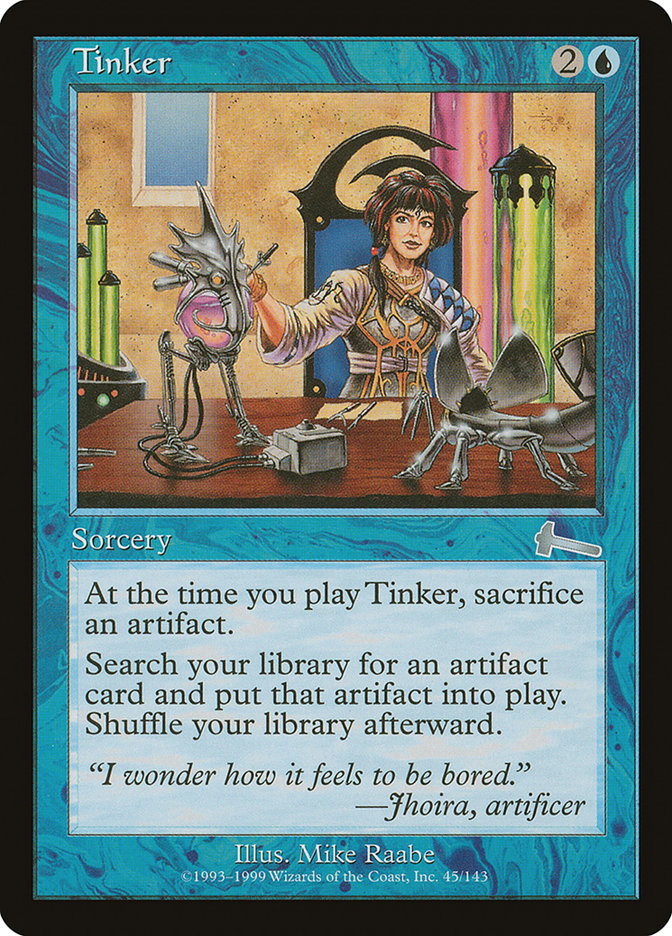
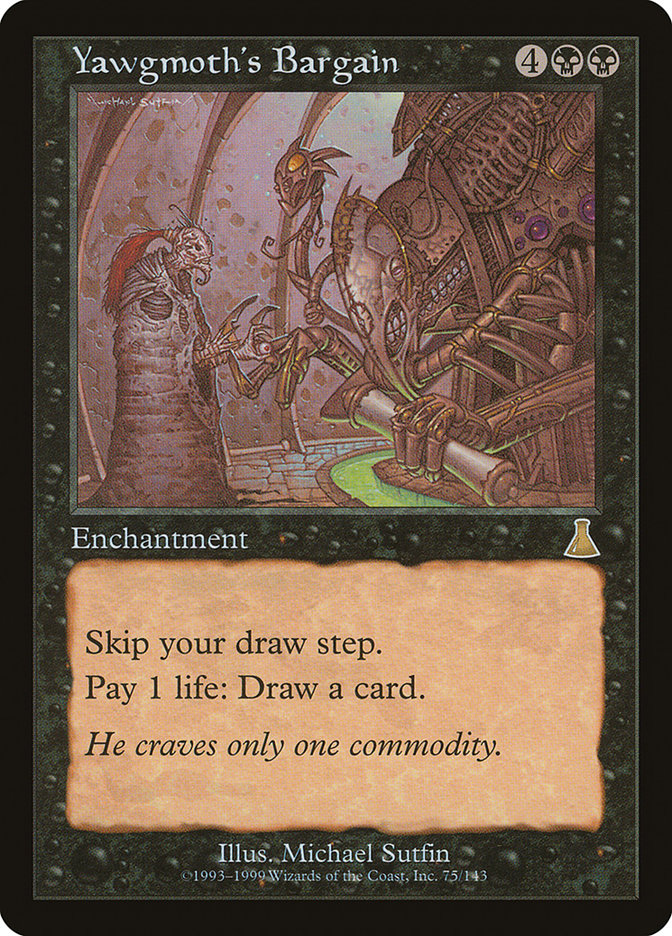
Tinker and Yawgmoth’s Bargain are the last two banned cards from this set due to their unrelenting power. Yawgmoth’s Bargain may seem like a “worse Necropotence,” which is what it was intended to be, but once it is in play the unrestricted draw for a single life was too strong for Standard and way too strong for Commander. Tinker is banned simply for power level reasons; the effect is overpowered due to its careless mix of tutoring and cheating out mana costs.
Mirrodin wins this section by a landslide.
With a stronger set of staples and a less detrimental impact to the format, Mirrodin Block wins this battle against Urza’s Block! The next battle will pit the multicolored Return to Ravnica Block against the gothic horror-themed Innistrad Block.
If you think I got it wrong or that the wrong block won, please let me know in the comments!

